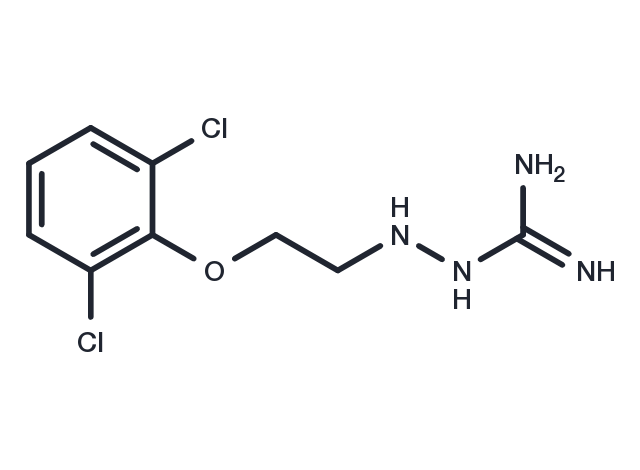Powder: -20°C for 3 years | In solvent: -80°C for 1 year


Guanoclor (VATENSOL) (INN), also known as guanochlor, is a sympatholytic drug. It is known to bind to non-adrenergic sites in pig kidney membranes.

| Pack Size | Availability | Price/USD | Quantity |
|---|---|---|---|
| 1 mg | In stock | $ 37.00 | |
| 2 mg | In stock | $ 50.00 | |
| 5 mg | In stock | $ 68.00 | |
| 10 mg | In stock | $ 98.00 | |
| 25 mg | In stock | $ 178.00 | |
| 50 mg | In stock | $ 255.00 | |
| 1 mL * 10 mM (in DMSO) | In stock | $ 74.00 |

| Description | Guanoclor (VATENSOL) (INN), also known as guanochlor, is a sympatholytic drug. It is known to bind to non-adrenergic sites in pig kidney membranes. |
| Synonyms | VATENSOL |
| Molecular Weight | 263.12 |
| Formula | C9H12Cl2N4O |
| CAS No. | 5001-32-1 |
Powder: -20°C for 3 years | In solvent: -80°C for 1 year
DMSO: 2.63 mg/ml (10 mM), Sonication is recommended.
You can also refer to dose conversion for different animals. More
bottom
Please see Inhibitor Handling Instructions for more frequently ask questions. Topics include: how to prepare stock solutions, how to store products, and cautions on cell-based assays & animal experiments, etc.
Guanoclor 5001-32-1 Others Dopamine beta-hydroxylase Dopamine β-hydroxylase Inhibitor noradrenaline synthesis adrenergic neurone-blocking agent Dopamine β-monooxygenase antihypertensive Dopamine beta-monooxygenase inhibit VATENSOL inhibitor
